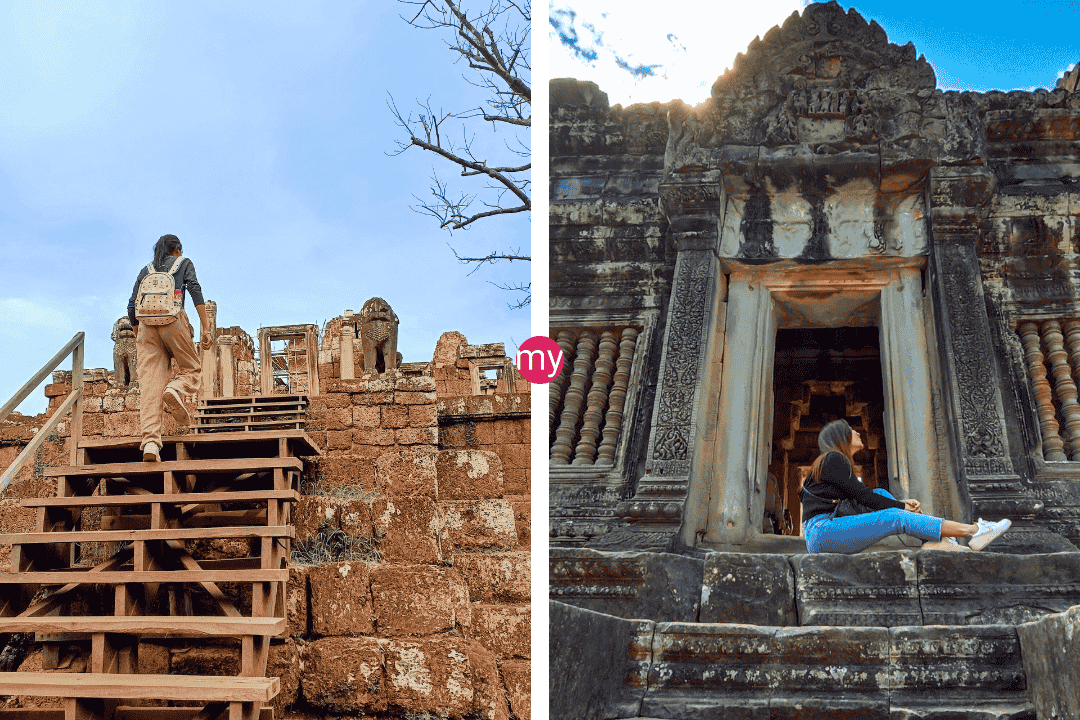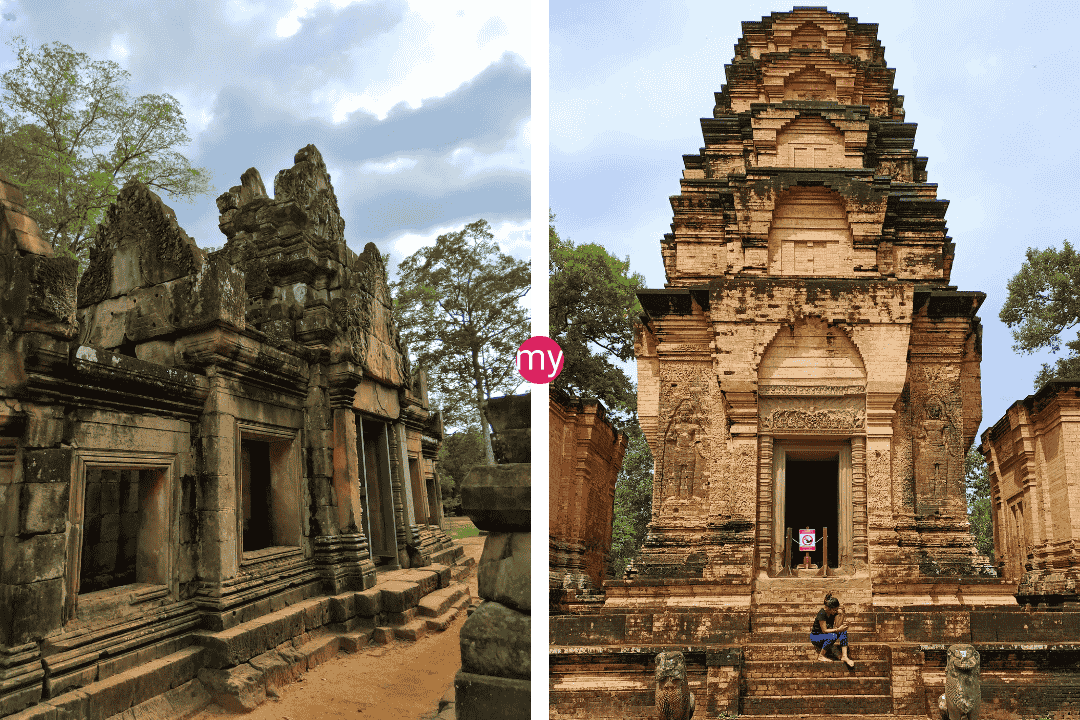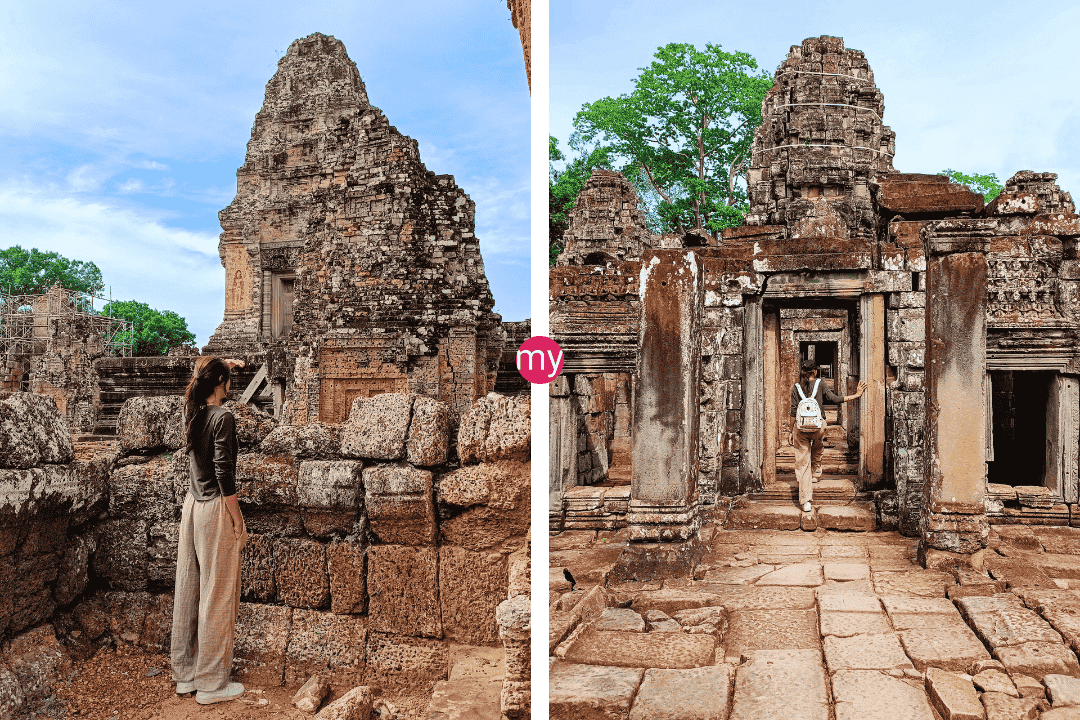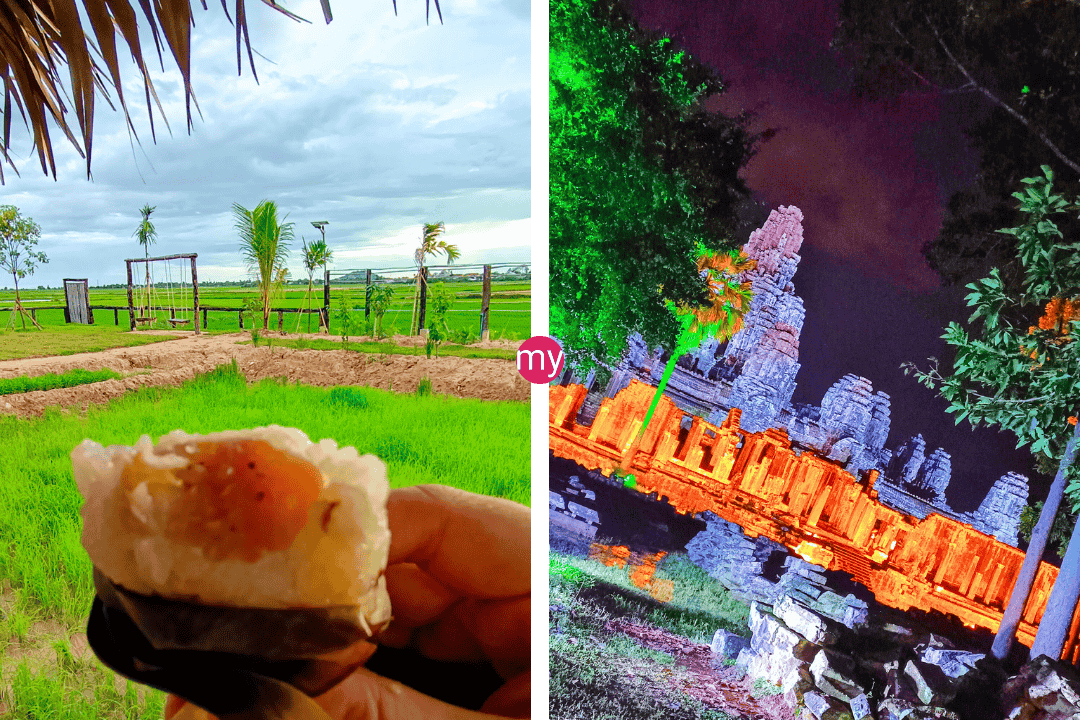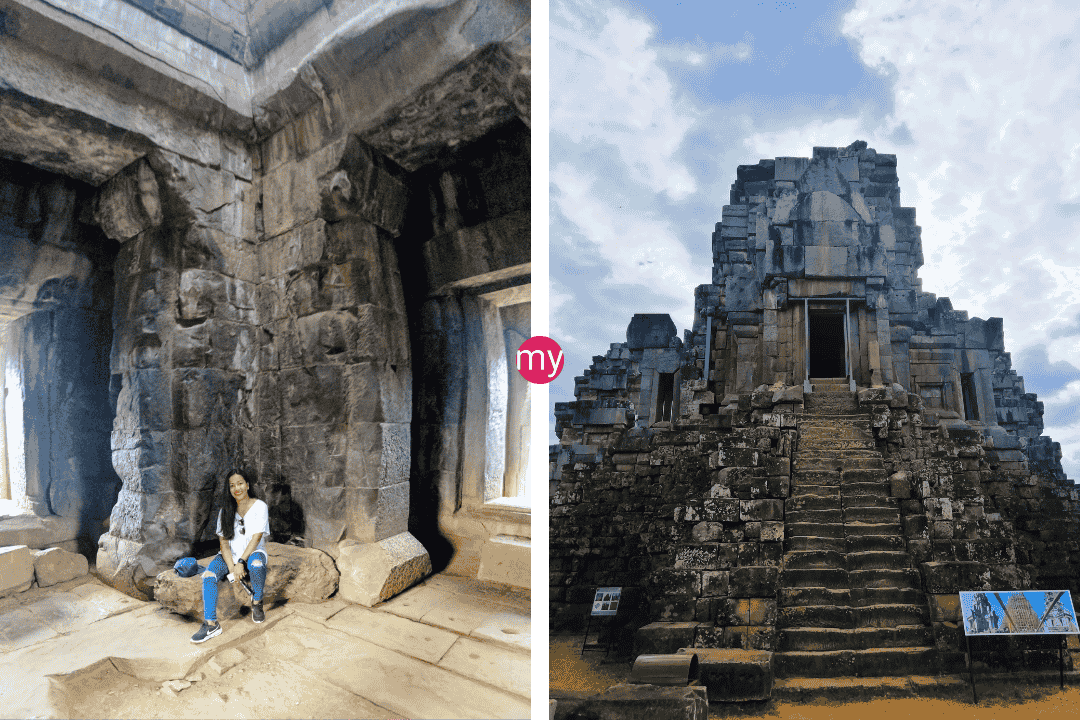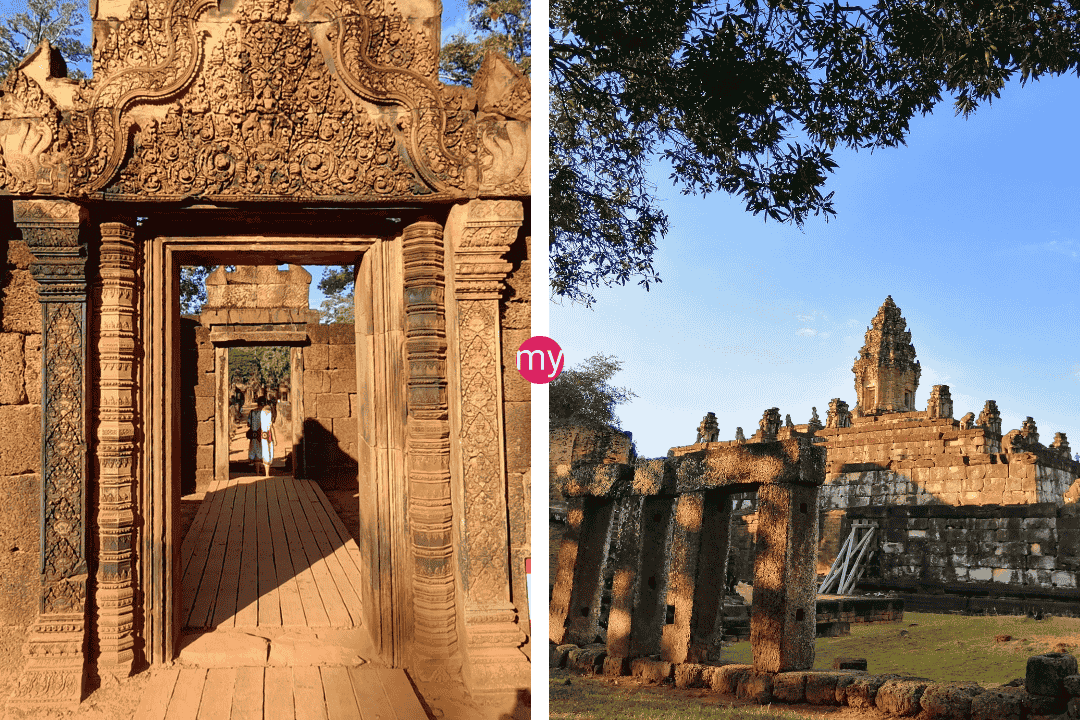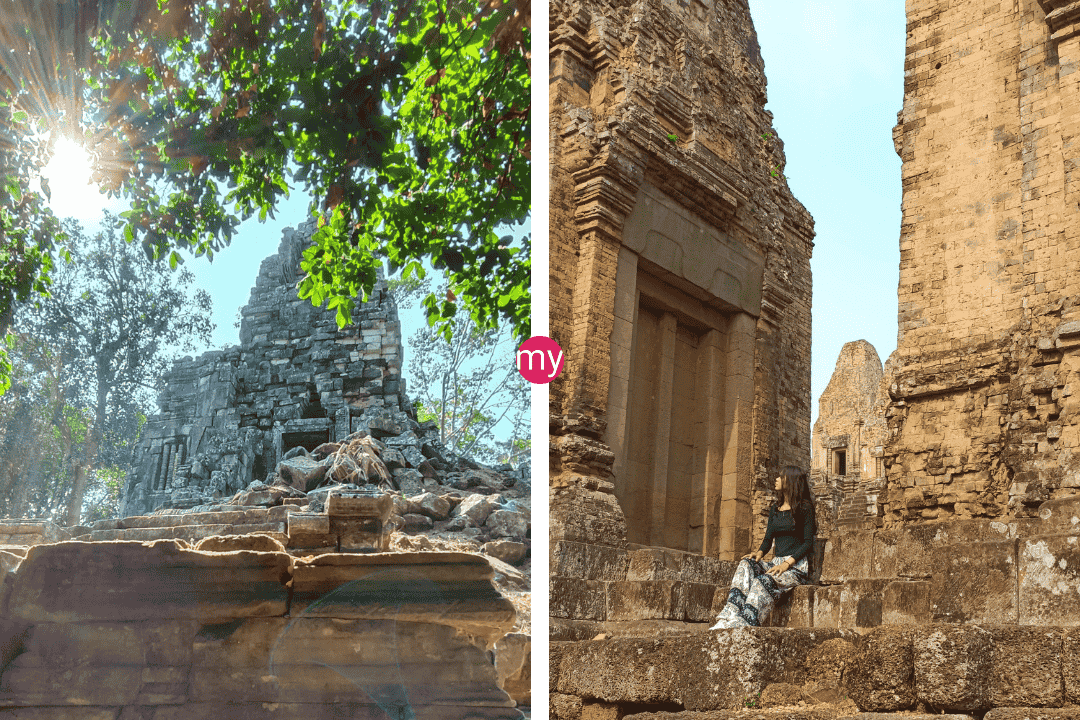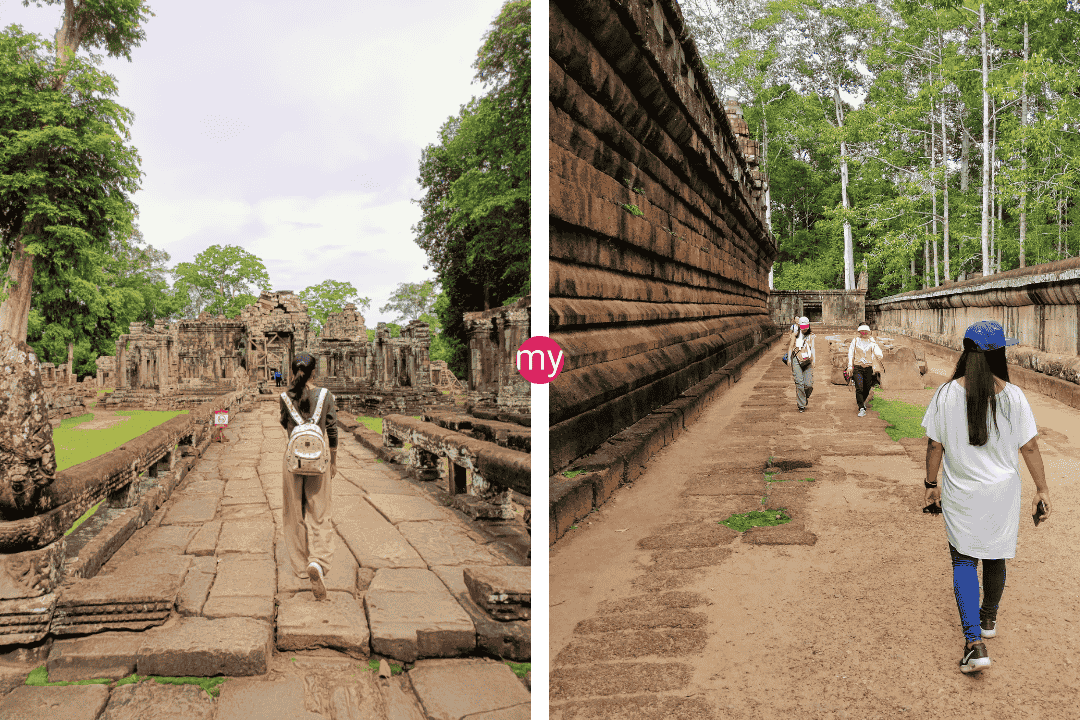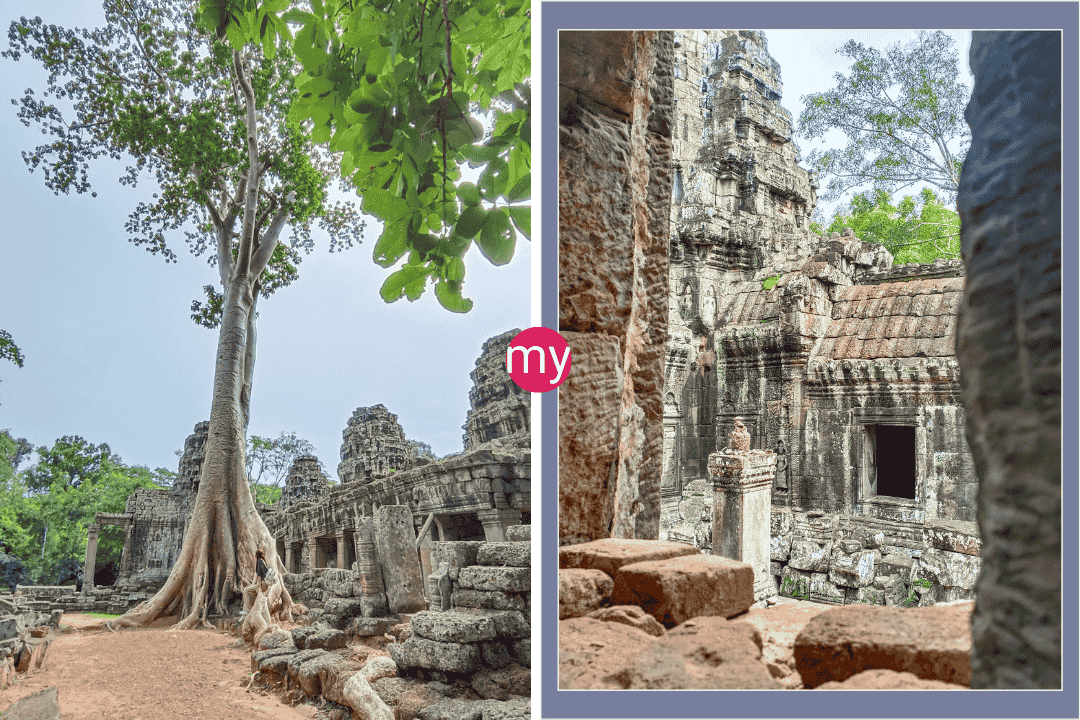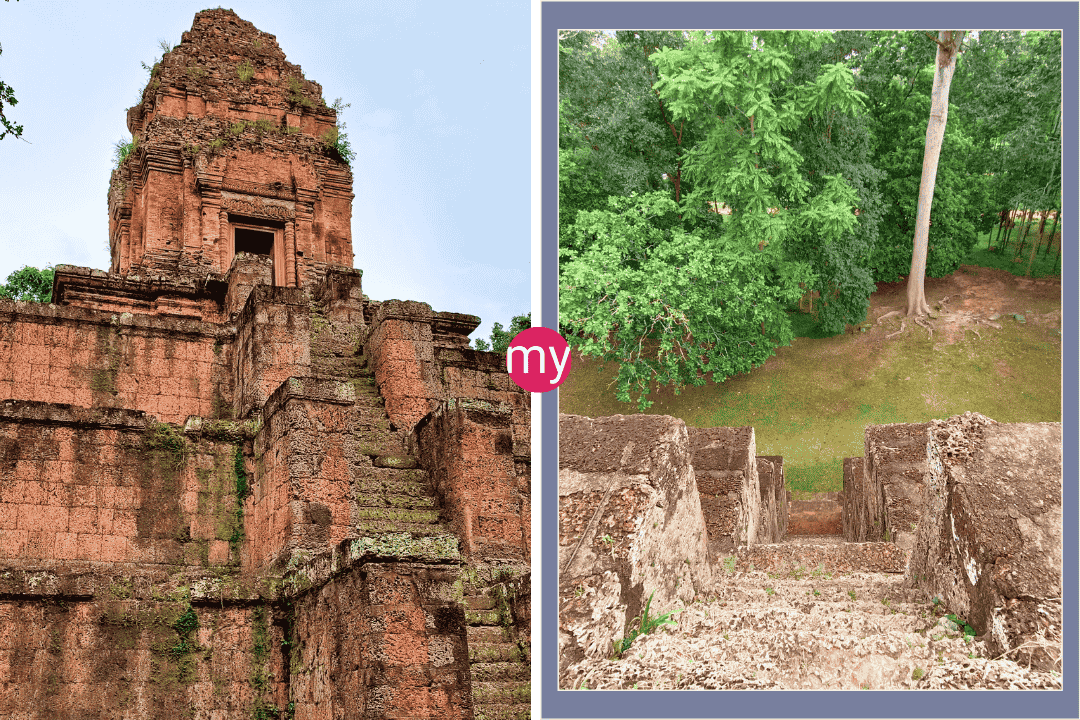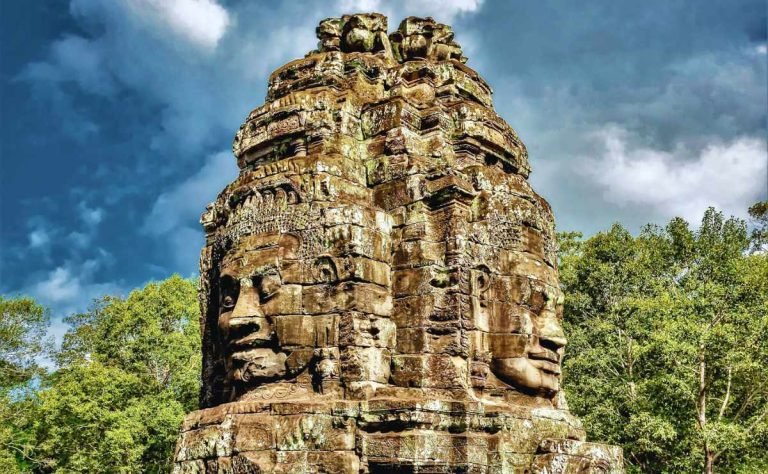
A Photographic Journey Through Siem Reap
Framing Siem Reap: A Pictorial Passage from Sacred Shrines to Emerald Terrains
An Enlightening Photographic Odyssey from Ancient Temples to Verdant Rice Fields
A Photographic Journey Through Siem Reap
From Temples to Rice Fields A Photographic Journey Through Siem Reap
Exploring Siem Reap
Venturing into Siem Reap is a unique adventure. It unveils hidden treasures and majestic landmarks. Take breathtaking Instagram-friendly shots of ancient temples! There’s more to Siem Reap than meets the eye.
Explore the lush green rice fields. Plant rice and engage with locals. Feel the fresh breeze and embrace nature.
Witness the iconic Angkor Wat temple at sunrise or sunset. Marvel at the intricate carvings and architecture. Don’t forget to take pictures where Tomb Raider was filmed!
I found an amazing experience at a cozy bar. Traditional dancers told stories with gestures and unique music. I felt like Indiana Jones on a budget!
Journeying through Temples
As I embarked on my journey through Siem Reap, I had the opportunity to explore the magnificent temples that dot the landscape. The journey through these ancient monuments was a truly unforgettable experience.
Wandering through these historically rich temples, I was awestruck by the intricate carvings and architecture that stood tall before me. The temples transported me back in time, and I found myself lost in the rich history of the region.
I was particularly fascinated by the unique blend of different architectural styles that were present in the temples. The intricate decorations and carvings on the walls and pillars were a sight to behold.
It is fascinating to note that many of the temples have been painstakingly restored and renovated over the years. The restoration work has ensured that the temples stand tall in all their glory, allowing visitors to appreciate their magnificence up close.
According to National Geographic, the restoration of these temples is a collaborative effort between the government, conservationists and communities, all of whom work tirelessly to preserve the rich cultural heritage of the region.
As I continued my journey through Siem Reap, I couldn’t help but feel humbled by the history and culture that surrounded me. The temples were truly a window into the past, and I felt incredibly fortunate to have borne witness to the grandeur of these ancient monuments.
“I may not be the most cultured tourist, but even I know that one does not simply skim Angkor Wat.”
1-day Angkor Wat SMALL LOOP Private tour | Make the Most of Your 1-day Visit with a Guide on Angkor Small Circuit
Angkor Wat
The Khmer Empire constructed this awe-inspiring temple complex. It is world-renowned for its grand religious monument. It has multiple temples and structures that tourists flock to. Angkor Wat complex shows off ancient architects’ skill with its detailed carvings and architecture.
On the walls and surfaces of the temple, there is intricate detailing. The main temple has a unique design with towers that symbolize Mount Meru. Intricate statues of mythological figures and gods decorate the temple. There are also expansive courtyards with towering pillars that have religious inscriptions.
In addition, there is an ancient library called Banteay Srei. This library has some of the finest carvings in all of Angkor Wat. Although small, it has kept its cultural relevance for centuries.
During my visit, I met a monk who shared his knowledge about life in the complex. He spoke of Buddhist monks being involved in state affairs and helping maintain social stability around the temples. His words made my experience at Angkor Wat richer.
At Bayon Temple, there are faces smiling everywhere. It was like a giant Where’s Waldo game!
Bayon Temple
The enigmatic temple of Angkor Thom stands tall, a symbol of Cambodian architecture. Bayon Temple entices visitors with its intricate scenes from everyday life and complex history. As you tread through the corridors, the towering stone faces guide you to a path of enlightenment- each crevice telling its own story.
Admire the stone reliefs– they depict Khmer history and legend. The central chamber has huge pillars rising to dizzying heights- it’s like being transported to a different world. The intricate details make this architectural masterpiece one of Cambodia’s greatest treasures.
As you explore the temple, keep an eye out for carvings of dancers in intricately draped costumes, turtles, buffalo– all representing daily life in medieval Cambodia. Hidden away is an ancient inscription of Bayon Temple’s traditional healing practices- giving insight into religion and healthcare in those times.
Rumor has it that Bayon Temple holds many secrets. A treasure trove is said to be buried beneath the nearby mountainside- containing thousands of priceless artifacts looted by unknown invaders centuries ago! Such legends add to the allure of this iconic temple- luring tourists back every year to live their dreams!
Angkor Wat and Angkor Thom tour – A complete Private full day tour including a soft lunch, 1 Extra Temple of your choice + 1 Bonus Coupon Code for your next day Private Siem Reap City Tour
Take a journey through history at Preah Khan Temple– but beware- Khmer history lies around every corner.
Preah Khan Temple
This ancient temple is known for its stunning architecture and cultural history. Preah Khan Temple was constructed in the 12th century as an homage to King Jayavarman VII’s late father. Covering 56 hectares of land, it’s one of Cambodia’s largest temples filled with over 400 sacred sanctuaries!
As you make your way through the ruins, you’ll be amazed at the intricate carvings of Hindu and Buddhist mythologies. It was once a Buddhist university with nearly 1000 teachers!
Be sure to check out the relics from the complex, which include a sculpture of Buddha and other historic artifacts that give you a peek into Cambodia’s past.
Back in the day, Preah Khan Temple was home to 90,000 people and served as a hub for art and innovation.
Visit this spectacular landmark to connect with Cambodia’s ancient roots while getting a modern-day perspective on Southeast Asia’s cultural evolution. Who needs a treadmill when you can explore the endless sea of rice fields and feel like you’re in a video game?
1-day Angkor Wat GRAND LOOP Private tour with air-con minivan [with the famous Banteay Srei temple]
Discovering Rice Fields
As I ventured through the lush and vibrant Siem Reap countryside, I was captivated by the beauty and significance of the local rice fields. These magnificently terraced fields offer captivating glimpses into Cambodia’s rich agricultural heritage. The intricate system of irrigation that sustains these fields is an impressive feat of engineering, showcasing the resilience and resourcefulness of the Cambodian people.
I learned that the rice fields were not only a source of sustenance but also an integral part of the Khmer Empire’s cultural and religious practices. The fields were once considered sacred spaces and were used as offerings to the gods. It was fascinating to see how this tradition has evolved over the centuries, and how the rice fields continue to play a critical role in the local economy and culture today.
One unique aspect of these rice fields is the diverse range of species of rice that are grown here. The Cambodian farmers have developed a complex and ingenious method of crop rotation, which ensures a high yield of rice year after year. The variation in rice species not only contributes to the local diet but also creates a vibrant and colorful landscape, making it a delight to behold and photograph.
As I continued to explore the rice fields, I was struck by the resilience and perseverance of the Cambodian people. Despite facing numerous hardships over the years, they have remained steadfast in their pursuit of sustenance and prosperity. It was humbling to witness their incredible hard work and determination – a legacy that has been passed down through generations.
Indeed, the rice fields of Siem Reap represent much more than just farmland. They are a testament to the ingenuity and resourcefulness of a people who have overcome adversity time and time again. As I left this incredible place, I felt grateful to have had the opportunity to witness firsthand the beauty and significance of this magnificent landscape.
The only thing more plentiful than rice in Siem Reap? Mosquito bites while trying to capture the perfect shot.
Private Angkor Wat special tour – Angkor Guided Tour with Phnom Bok Sunset and much more
Life in the rice fields
Rice Fields Unveiled: An Adventure Awaits!
Lush green rice fields, a rich culture, and the life that lives within them. Grazing cattle, mud-bathing buffaloes, and workers walking among the paddy fields.
The scenery is peaceful; water soaking into the soil reflects the sky with a mesmerizing beauty. Every day is full of purpose; from sunrise to sunset, the farmers work on their land. Fathoming the life of a farmer requires a visit to one of these spread-out farms.
Every paddy field is unique, with its own story of struggle, success, and hope. You might spy migrating water birds, or witness long-lasting harvests. This lifestyle and culture will bring fresh perspectives and awaken a deep respect for nature.
Don’t miss out on exploring these ancient paddies, filled with life! Prepare to be immersed in tradition, history, and sustainable farming. If farming was a sport, rice cultivation would win the gold medal!
Journey Through Time and Nature [Explore the Banteay Srei Temple, Beng Mealea, Banteay Srey butterfly centre and Rolous Temples Group]
Rice cultivation and harvesting
Rice farming is an intricate process. You need the right know-how, techniques, and equipment to bring those paddy fields to an abundant harvest. Cultivating, selecting sites, preparing land, managing nurseries, applying fertilizers, irrigating, harvesting, threshing, drying, cleaning grains, and bundling are all part of the process.
Herons and egrets play a vital role in keeping pests away from rice paddies, eating up destructive insects and rodents. This ensures healthy crops are grown.
Rice cultivation began 10,000 years ago in China and spread to other Asian countries before arriving in the West during medieval times. It’s now one of the most important food sources, feeding billions of people around the globe.
Be prepared to dive into a different culture, but be warned, you may end up with an unexpected surprise in the bathroom after trying some new foods!
Experiencing Local Culture
As I immerse myself in the local community, I am delighted to have the opportunity to experience cultural customs firsthand. From participating in traditional ceremonies to enjoying authentic cuisine, there is no better way to gain a profound appreciation of the local lifestyle and culture. The people of Siem Reap are friendly and welcoming, making it easy to connect with them and learn about their way of life.
Exploring the markets and visiting the artisans’ workshops is a great way to learn about the local arts and crafts. Siem Reap is famous for its textiles, wood carvings, and jewelry. I have been fortunate enough to witness the intricate processes involved in creating these beautiful pieces, using techniques passed down through generations.
While it is important to respect cultural differences, it is also essential to understand and appreciate them. The local culture in Siem Reap has a rich history, which is evident in the ancient temples and ruins that dot the landscape. Each site has its unique story and significance, and it is fascinating to learn about their architectural and cultural features.
One of the most fascinating aspects of Siem Reap’s culture is the resilience of its people in light of their turbulent history. The Khmer Rouge regime had a significant impact on the country, and it is incredible to see how far the community has come since then. Despite facing many challenges, the locals have an incredible spirit and have bounced back with admirable determination and strength.
Siem Reap’s local culture is incredibly diverse and offers a great opportunity to learn about a way of life that is vastly different from our own. The experience of being immersed in it is something I will cherish for a long time to come.
I tried to learn traditional Khmer dance, but ended up looking like a drunk chicken.
Siem Reap private City Tour – Explore Siem Reap | Siem Reap private day tour with guide
Traditional Dance Performances
Witness culture and customs through traditional dance displays. See the detailed heritage of a community expressed in a visually stunning show. Each performance is choreographed with precision and stories that represent events, gods, or activities. Costumes often carry symbolism and add to the authenticity.
Research regional festivals and ceremonies to witness first-hand how vibrant and impactful these displays can be. Ethnologist Johan Reinhard stated that dance is “the most fundamental of all human expression” – National Geographic.
Experience local culture with Authentic Khmer Cuisine. This flavour explosion is the perfect way to taste the culture.
Authentic Khmer Cuisine
Indulge in Cambodia’s unique culinary heritage! Genuine Khmer Cuisine brings together a variety of flavors from neighboring countries like Thailand and Vietnam. Herbs and spices make up the core of the cuisine – think chili peppers, lemongrass, galangal, and turmeric. You can’t miss out on dishes like Amok Trey, steamed fish curries in banana leaves, and Somlor Machu Kreung K’tis – a sour soup with either chicken, pork or fish.
Cambodians have some interesting traditions associated with food – some even eat insects like freshwater crabs or tarantulas! It’s believed these crawlies deliver tasty treats.
The Golden Era of King Suryavarman II’s reign is credited with improving agricultural productivity that supplied more rice, coconut milk and palm sugar within the country. This abundance led to the development of Khmer Cuisine as we know it today! Snapshots may fade, but the memories of the journey will stay with you forever.
Private Siem Reap Culinary Tour | From Market to Garden Tour with Siem Reap Cooking Class and Angkor Botanical Garden
Capturing the Journey
As I embarked on my photographic journey through Siem Reap, I was determined to capture every step of the way. Through temples and rice fields, I ensured each moment was captured and encapsulated into timeless images. Detailing each shot, from the majestic architecture to the intricacies of rural life, I showcased the essence of Siem Reap with every click of the camera.
As I continued to capture the journey, I was able to uncover hidden gems that could only be seen through the lens of a camera. Each snapshot brought forth unique perspectives, revealing the true beauty and life that emanates from this mystical region. With an eye for detail and an appreciation for the cultural significance of Siem Reap, I infused each image with its own story, a piece of history waiting to be uncovered.
Beyond the grandeur of the temples and the magnificence of the rice fields, I was able to focus on the subtle and ordinary moments that make Siem Reap so unique. From the warmth of a smile to the simplicity of a gesture, I was able to showcase the human aspect of this captivating place. Every image was a testament to the rich tapestry of life, reflecting the complexity and diversity of Siem Reap’s people and their traditions.
Pro Tip: When capturing the journey through Siem Reap, take the time to explore beyond the beaten path. The magic of this region lies in its ability to surprise and inspire. So don’t be afraid to wander and let your camera lead the way.
Capture the essence of Siem Reap with these photography tips, because blurry temple selfies just won’t cut it.
Introduction to Phnom Krom – the best place to catch a Siem Reap sunset
Photography Tips and Tricks
Photographers strive to capture life’s essence and beauty through our lenses. To do this, we need photography skills that help us tell stories. Whether you’re a beginner or an expert, you can improve your craft with tips and tricks.
Composition is important for stunning photos. Try the rule of thirds, leading lines, contrast, and lighting. Add a unique perspective or framing technique to make your images stand out. For example, shoot from a low angle or use framing elements like doors or windows.
I once captured portraits during a street fair in India. Amongst the lively crowds and colors, I found an elderly woman seated with a peaceful expression. It was an impactful portrait which remains one of my favorites today. The magic of photography lies in these unexpected moments we capture forever. Sharing your travel experience is worth it for the laughs and memories.
Sharing the Experience
Digitization makes it a must to capture and show off unique experiences. Whether it’s travel or special moments, sharing memories helps build connections with people. ‘Capturing the Journey‘ is about using media tools like photos, videos and audio. This allows one to show their personality and the view they have.
Posting meaningful experiences on social media and other sites enables people to be part of a community. Strategically capturing the journey makes content that will be interesting to others. Adding more to the story can be done with live streaming or virtual reality.
To increase engagement, storytelling should be used. This helps the audience visualize themselves in the story. Using vivid descriptions or peeling back layers through introspection during the experience makes it unique. Also, using hashtags when posting stories online increases visibility.
The Quintessential Guide to Siem Reap Dress Code: Elegance Meets Culture
Frequently Asked Questions
What inspired you to create ‘From Temples to Rice Fields: A Photographic Journey Through Siem Reap’?
I have always been fascinated by Southeast Asian culture and landscapes. Siem Reap, in particular, has so much to offer – from its ancient temples to its vibrant rice fields. I wanted to capture the beauty and complexity of the area through photography.
What makes Siem Reap unique compared to other tourist destinations?
Siem Reap is unique because it offers a blend of ancient history and modern experiences. You can explore centuries-old temples one day and then indulge in delicious food and nightlife the next. Plus, the landscapes are truly stunning, with lush green rice fields and tranquil rivers.
What was the most memorable part of your trip to Siem Reap?
For me, the most memorable part of the trip was visiting Angkor Wat at sunrise. The temple complex is simply breathtaking, and being there during the early morning hours is like stepping back in time. It’s an experience I’ll never forget.
How did you choose which locations to include in your photographic journey?
I researched and explored the area extensively to determine which locations best captured the essence of Siem Reap. I wanted to showcase both well-known landmarks and lesser-known spots that would offer a unique perspective.
What do you hope people take away from your photographic journey?
I hope people are inspired to explore Siem Reap for themselves and to appreciate the beauty of this unique area. I also hope my photographs can serve as a reminder of the importance of preserving cultural and natural landmarks for future generations.
Let’s put down a list of Key Takeaways learned until this point:
Ultimate Siem Reap Packing List:
- Pack lightweight, breathable clothes and quick-drying swimsuits for comfort and convenience.
- Carry essentials like a valid passport, visa, travel insurance, camera, and first-aid kit.
- Stay connected with smartphones, offline maps, translator apps, and Wi-Fi hotspots.
- Protect yourself from the sun with hats, sunglasses, insect repellent, and sunscreen.
- Be prepared for any weather with umbrellas or raincoats.
- Carry local currency, credit/debit cards, emergency contacts, and printed itineraries.
- Stay hydrated with reusable water bottles and keep energized with snacks and drinks.
- Remember prescription medications for a stress-free experience.
Clothing Essentials:
- Choose light, breathable, and loose-fitting clothes made from fabrics like cotton, linen or rayon.
- Opt for lighter shades that reflect sunlight and prevent glare.
- Moisture-wicking socks can help avoid sweaty feet.
Swimwear or Quick-Drying Clothes:
- Durable and snug-fitting swimwear is essential for water activities.
- Quick-drying clothes made from synthetic materials are perfect for water-based sports.
- Rashguards provide protection from the sun’s harmful rays and potential irritants in saltwater environments.
- Dry bags and water shoes are necessary for aquatic expeditions.
Featured
Recent Articles
Explore more on My Siem Reap Tours
Koh Ker and Beng Mealea guided tour | Banteay Srei temple tour semi-private guided tour | Angkor Wat Sunrise shared tour | Koh Ker and Beng Mealea guided tour | Morning Siem Reap floating village tour | Afternoon Siem Reap floating village tour | Private Angkor Wat special tour | Kulen Waterfall small group guided Tour | Private Angkor Wat mix temples photo tour
